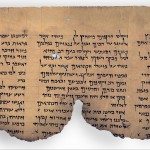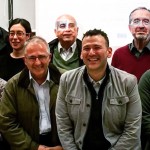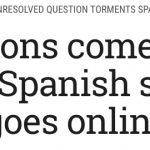Faculty of English, Oxford University, 13 September 2019, https://aevum.space/darkarchives
This goal-setting, process-based, and tool-oriented workshop is intended to assist scholars with conducting initial planning and scope activities to develop a citizen-science (crowdsourcing) project using medieval manuscripts and artifacts.
This workshop is based on the research presented in the peer-reviewed article: Deciphering Secrets of Medieval Cathedrals: Crowdsourced Manuscript Transcriptions and Modern Digital Editions.
Citation: Martinez-Davila, Roger Louis; Perrone, Sean; Serrano-Nebras, Francisco Garcia; and Martin de Vidales Garcia, Maria (2018) “Deciphering Secrets of Medieval Cathedrals: Crowdsourced Manuscript Transcriptions and Modern Digital Editions,” Bulletin for Spanish and Portuguese Historical Studies: Vol. 43 : Iss. 1 , Article 2. https://doi.org/10.26431/0739-182X.1289 Available at: https://digitalcommons.asphs.net/bsphs/vol43/iss1/2
Define Your Goals

You must clearly define your goals and objectives so that your project is manageable given the resources available. For example:
- Social goal: I want to educate 250+ persons about the cultural value of manuscripts.
- Outcome goal: I want to expose 250+ persons to project using Internet-based project.
- Research goal: I want volunteers to transcribe 15 folios from the “X” manuscript to learn “Y”?
- Proof-of-concept goal: I want to test whether my transcription method works with a general audience?
Secure Source Materials

Crowdsourcing manuscripts enters the world of who owns and controls the sources. Be certain to understand the constraints of international and national laws relating to copyright and public domain materials.
- For example, look closely as copyright and public domain laws for your country. When creating digital images of manuscripts, something than many of us do when working in archives and libraries, do consider who owns or does not own the photo. As pointed out by Andrew Dunning (Cambridge U), a participant in the workshop:
- “Direct reproduction[s) cannot be copyrighted. These articles give an overview for both the EU and USA: https://doi.org/10.1007/978-3-319-95690-9_8 and http://papers.ssrn.com/abstract=2573104 See also these dissenting opinions on the copyright status of editions of public-domain texts: http://ssrn.com/abstract=1961535 and https://www.uni-marburg.de/de/fb01/professuren/zivilrecht/prof-dr-georgios-gounalakis/schriftenverzeichnis/aufsaetze/us-copyright.pdf“
- Digital photographs taken by researchers (that would be “you”) can be released via public domain or Creative Commons license.
- According the General Counsel of the University of Colorado-Colorado Springs, Deciphering Secrets MOOCs can be publicly released and posted on the university’s website per USA public domain laws.
- Be prepared to negotiate with holding institutions (archives, libraries) and pay for access to distribute materials via the Internet. Most institutions can be reasonable, even private ecclesiastical ones.
- Do not take “no” for an answer. Use calls to action and social media to “incentivize” institutions to release their documents.
Identify Stakeholders

Do you best to identify who will be most interested in your project. A generic post to Facebook or Twitter will not mobilize those most intrigued by your work. Target your audience.
- Cultural consumers. Generally, our audience is roughly 40 to 65 years of age, holds a university or advanced degree, is 50% male/50% female, and is a museum visitor.
- Ethnic or regional interest groups.
- Religious groups.
- Social and historical societies.
- Medieval art connoisseurs .
Select Tools & Processes

Crowdsourcing documents does not require a complicated process or web-based tool. It simply requires a site to distribute manuscripts images and to gather transcriptions. Start simple. Be careful about adopting a specific platform (its site and upkeep could become problematic).
- A website or Google Drive folder with images and descriptions is sufficient. http://www.decipheringsecrets.com/research/manuscript-collections-2/
- Collecting transcriptions in comment fields or discussion groups works well, but time intensive to collect afterwards.
- Social media (Twitter, Facebook, Instagram) are ideal ways to distribute images and collect transcriptions
- Massive Open Online Courses (MOOCs) offer structured course management systems that allow transcription projects to be student assignments and submissions. Via a university affiliation, use www.coursera.org or www.edx.org. See a sample syllabus – Deciphering Secrets: Unlocking the Manuscripts of Medieval Toledo (Spain) MOOC
- Crowdsourcing sites can work as well — www.zooniverse.org.
- Online education courses via your university (that generate college credits) are another option.
Create Instructional Materials

Remember who your stakeholders are — cultural consumers. We are teaching, but to an audience that requires short-bursts of information (less than 5 minutes attention) and medium-term tasks (15-20 minutes attention).
- Create educational-entertainment posts and videos that socially and culturally-contextualize your manuscripts. Why is this manuscript important?
- Create custom paleography manuals for your students.
- Create short video lectures on “how to” perform paleography.
- Create online practice assignments and exams for students to hone their skills. See Deciphering Secrets MOOCs on coursera.org.
Paid and Earned Media

Academics are unaccustomed to marketing their ideas to larger, public audiences. However, this is a fight for the hearts, minds, and eyes of the public. In the world of university online education as much as 40% of collected tuition revenues are used to market to and secure students. We do not have the option of these funds, but do consider how you can “purchase media”, or create ads on social media sites (starting as little as $10 or $15 a week), or better “earn media”, that is when you market directly to press agencies and press offices.
- University-based earned media — CU on the Air — Exploring and learning from coexistence in Medieval Spain.
- Press-earned media — The Times of Israel — Old tensions come to life as medieval Spanish synagogue goes online
- Press-earned media — My Modern Met — You Can Take Over 3,500 Free Online Classes Starting This Month
